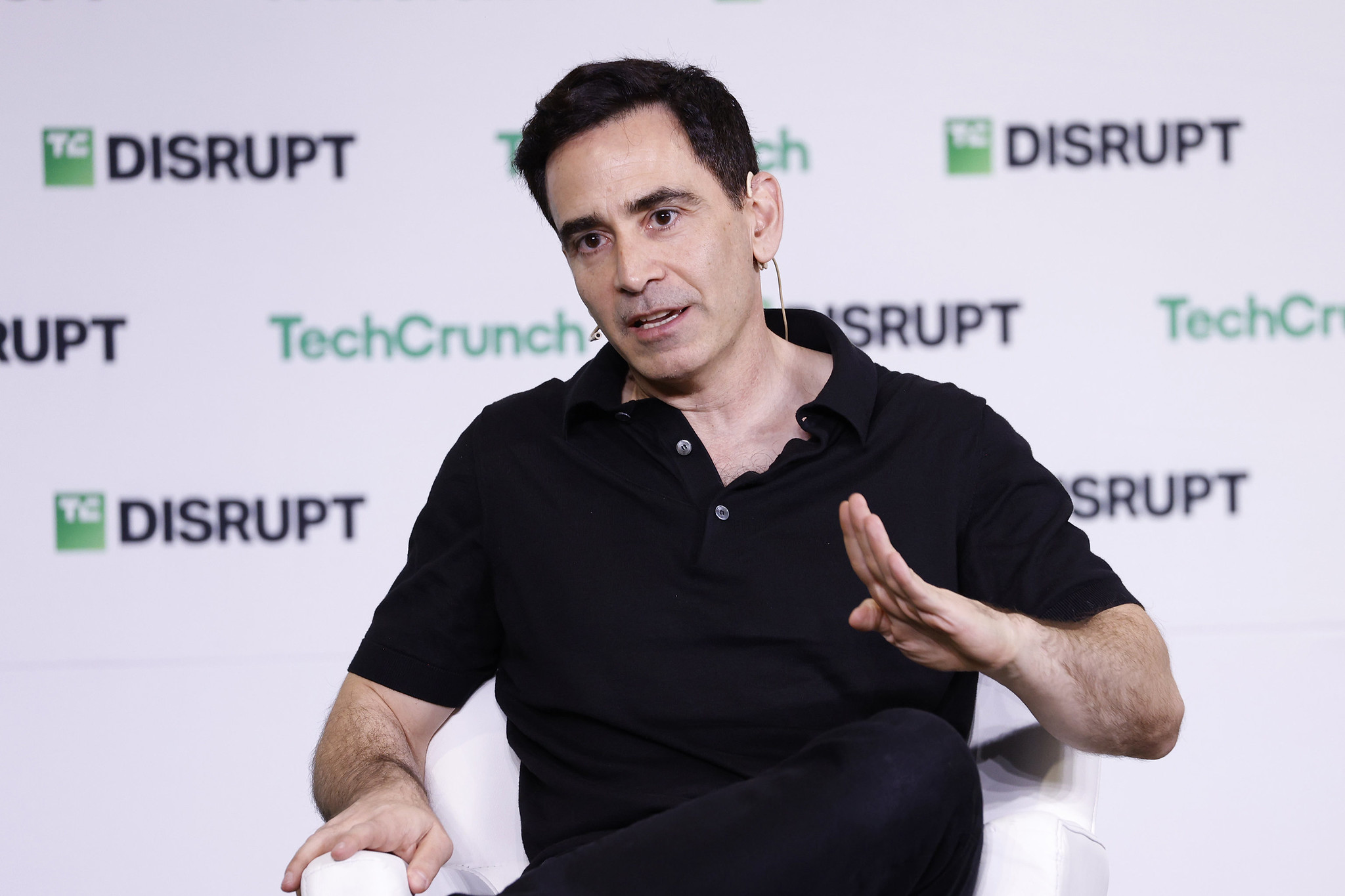
The artificial intelligence revolution, often lauded as the most transformative technological wave of our era, has presented an unprecedented landscape of innovation and uncertainty, even for seasoned venture capitalists. Elad Gil, a solo VC investor renowned for his early stakes in some of the past decade’s most successful tech ventures, including many prominent AI companies, recently highlighted the uniquely unpredictable nature of this boom. Speaking at TechCrunch Disrupt, Gil underscored how certain sectors within AI are rapidly consolidating around a few dominant players, while vast swathes of the market remain wide open, ripe for future disruption.
A Prescient Vision Amidst Early Doubts
Gil’s journey into generative AI began in 2021, a period when widespread attention to the nascent field was still limited. His early conviction stemmed from a keen observation of the exponential leap in capabilities between OpenAI’s GPT-2, released in 2019, and GPT-3, which debuted in 2021. This substantial advancement, a testament to the power of scaling laws in machine learning, signaled a profound shift. Gil recognized that extrapolating this trajectory pointed toward an incredibly significant future for AI. This insight propelled him to back early-stage startups focused on large language models (LLMs), including foundational model developers like OpenAI and Mistral, alongside application-centric companies such as Perplexity, Harvey, Character.ai, Decagon, and Abridge.
The period following these initial investments, however, was marked by relentless, rapid-fire advancements. Throughout 2024 and much of 2025, foundational models continued to evolve at a blistering pace, with new releases frequently upending the AI landscape every few months. This dynamism contributed to an environment where clarity was elusive. As Gil reflected, "I used to say at the time that AI was the one market where the more I learn, the less I know. Usually, the more you learn about something, the better you know it, the easier you can predict the future, etc. But AI was just hazy. There’s just too much uncertainty. And I think there’s still markets like that in AI."
The Dawn of AI: A Brief Historical Context
To truly appreciate the current AI boom, it’s essential to understand its long and often tumultuous history. Artificial intelligence has seen several cycles of hype and disappointment, famously dubbed "AI winters," where research stalled due to technical limitations or unmet expectations. Early AI focused on symbolic reasoning and expert systems, achieving limited success. The 1990s and early 2000s saw a shift towards machine learning, with algorithms like support vector machines and decision trees gaining prominence.
The current resurgence, however, is largely attributed to several converging factors: the availability of massive datasets, significant advancements in computational power (particularly GPUs), and the development of sophisticated neural network architectures, especially the "transformer" model introduced in 2017. Transformers revolutionized natural language processing, enabling the creation of Large Language Models (LLMs) that could process and generate human-like text with unprecedented fluency. GPT-2 and GPT-3 were pivotal demonstrations of this capability, moving AI from academic labs into the public consciousness and paving the way for generative AI applications across various industries. This historical context illuminates why Gil’s early recognition of the GPT-2 to GPT-3 leap was so critical; it marked a departure from previous incremental improvements to a truly exponential growth phase.
Emerging Leaders in Consolidated AI Sectors
Despite the overarching uncertainty, Gil notes that some AI markets are beginning to show clear signs of consolidation, with a handful of players establishing significant leads. These sectors often involve substantial barriers to entry, such as immense capital requirements, specialized data access, or network effects.
Foundational Models: The Bedrock of AI
Perhaps the most evident example of consolidation lies within foundational models themselves. These massive, pre-trained models serve as the underlying intelligence for countless AI applications. While hundreds of models exist globally, the sheer scale of investment in computing power, proprietary data, and top-tier research talent required to develop and refine these models has naturally led to a concentrated field. Gil anticipates a limited number of ultimate winners: "Google, Anthropic, OpenAI, maybe xAI, maybe Meta, maybe Mistral — it’s like a handful."
This concentration has significant market implications. These few dominant players effectively control the "picks and shovels" of the AI gold rush, dictating pricing, accessibility, and the future direction of AI capabilities. The competitive landscape is intense, with each company pursuing distinct strategies: OpenAI pushing the frontier of general intelligence, Google leveraging its vast data and research prowess, Anthropic focusing on safety and alignment, Meta championing open-source models, Mistral emerging as a European challenger, and xAI carving out a niche with its unique approach. Geopolitical considerations also play a role, as evidenced by countries like South Korea actively investing in local companies to develop "sovereign models" to ensure national control over critical AI infrastructure. This race for foundational model dominance reflects a broader struggle for technological and economic leadership.
AI-Assisted Coding: Revolutionizing Software Development
Another sector witnessing rapid consolidation is AI-assisted coding. This domain aims to enhance developer productivity, automate repetitive tasks, and even generate code from natural language prompts. The impact on the software development lifecycle is profound, potentially accelerating innovation and lowering the barrier to entry for aspiring coders. However, it also raises questions about the future of traditional coding roles and the need for new skill sets centered on AI interaction and oversight.
Both foundational model makers and specialized startups have made significant inroads here. OpenAI’s Codex (powering GitHub Copilot) and Anthropic’s Claude Code demonstrate the direct application of core LLM technology to programming. Meanwhile, innovative startups like Anysphere’s Cursor and Cognition’s Devin (which notably acquired Windsurf) are building sophisticated AI coding agents that promise to redefine developer workflows. Even well-funded contenders like Magic (which Gil identifies as a potential "outlier") and Poolside are hot on their heels, indicating a fierce race to capture market share. The combination of incumbents integrating AI features and specialized startups pushing the boundaries suggests that late entrants will face a formidable challenge in this rapidly maturing space.
Medical Transcription: Streamlining Healthcare Documentation
The medical transcription market has also shown signs of being cornered, largely due to the highly specialized nature of the domain and the critical need for accuracy and compliance. This technology addresses a significant pain point in healthcare: the administrative burden on clinicians, which contributes to burnout and diverts time from patient care. AI-powered transcription can reduce errors, improve efficiency, and free up medical professionals to focus on their core responsibilities. However, regulatory frameworks like HIPAA and the need for robust data privacy and security are paramount, creating high barriers to entry for new players.
Abridge has emerged as a frontrunner in this specialized field, leveraging advanced AI to convert spoken medical conversations into structured clinical notes. Other significant players, such as Ambiance Healthcare, are also making important contributions. The success of these companies underscores the value of AI solutions that address specific, high-stakes industry needs, demonstrating how targeted applications can quickly establish market dominance by solving critical problems with precision and reliability.
Customer Support: The AI Agent Frontier
Customer support, an early target for both traditional AI and the newer wave of AI agent startups, is another area where market leaders are becoming increasingly difficult to dislodge. The application of AI here promises to transform customer experience, reduce operational costs for businesses, and redefine the role of human agents, shifting them towards more complex problem-solving. Early chatbots were often limited, but modern LLM-powered agents offer far more sophisticated, context-aware interactions.
Companies like Gil’s portfolio venture, Decagon, which recently secured $131 million at a $1.5 billion valuation, are leading the charge in developing advanced customer service bots. OpenAI chairman Bret Taylor’s startup, Sierra, also competes in this space, highlighting its strategic importance. Furthermore, established incumbents in the customer relationship management (CRM) sector, such as Salesforce and HubSpot, are aggressively integrating AI offerings into their platforms, creating a multi-faceted competitive environment where scale, existing customer bases, and deep product integration offer significant advantages.
Wide Open Horizons: Untapped AI Potential
While some sectors consolidate, Gil points to several intriguing markets that remain largely open, presenting substantial opportunities for innovative startups and investors. These areas often involve complex data, established workflows ripe for automation, or emerging threats that AI is uniquely positioned to address.
Financial Tooling (Fintech): Precision and Prediction
The fintech sector, with its vast datasets and critical need for precision, is ripe for AI-driven transformation. Applications range from algorithmic trading and fraud detection to personalized financial planning and regulatory compliance. AI can process complex market data in real-time, identify patterns invisible to human analysts, and automate tedious, error-prone tasks. However, the regulatory environment, the need for absolute data security, and the inherent risks of financial markets present unique challenges that require robust and trustworthy AI solutions. The potential for AI to enhance predictive analytics, optimize investment strategies, and improve risk management makes this a highly attractive, yet complex, frontier.
Accounting: Automating the Books
Accounting, characterized by repetitive data entry, complex calculations, and stringent compliance requirements, is another field poised for significant AI disruption. AI can automate bookkeeping, streamline audit processes, assist with tax preparation, and provide more accurate financial forecasting. The introduction of AI tools could free up accountants from mundane tasks, allowing them to focus on higher-value advisory roles. While the foundational technologies exist, developing AI solutions that integrate seamlessly with existing accounting systems, understand nuanced regulatory frameworks, and maintain audit trails requires deep domain expertise and careful implementation.
AI Security: Protecting the Intelligent Edge
As AI becomes more pervasive, the security of AI systems themselves emerges as a critical and wide-open market. This encompasses securing AI models from adversarial attacks (e.g., data poisoning, model evasion), protecting proprietary model weights, ensuring data privacy in training datasets, and developing AI-powered tools for cybersecurity (e.g., advanced threat detection, anomaly analysis). The inherent vulnerabilities of complex AI models and the increasing sophistication of cyber threats create an urgent demand for specialized AI security solutions. This is a nascent but rapidly growing field, as the integrity and resilience of AI systems become paramount across all industries.
Beyond these specific examples, Gil suggests there are "other markets that we know are by default very interesting. We just don’t know who’s going to do it." This highlights the exploratory phase of AI, where groundbreaking applications could emerge in unexpected areas, from advanced materials science and drug discovery to personalized education and climate modeling.
Discerning True Success from False Signals
One of Gil’s most crucial insights revolves around the deceptive nature of early revenue in the current AI climate. He observes that the rapid adoption of AI solutions by large enterprises doesn’t always signal long-term success. "The CEOs of every big company are basically telling their teams, hey, we have an edict. We need to figure out our AI strategy," Gil stated. This corporate mandate, driven by a fear of missing out and competitive pressures, leads many large organizations to quickly trial new AI products.
Consequently, new AI markets can see significant revenue streams from big-name enterprise customers almost instantly. However, Gil cautions, "but that doesn’t mean they’re going to stick." This phenomenon creates "false signals," where initial adoption is driven more by strategic necessity or hype than by genuine, enduring product-market fit. It is only after a market moves beyond this trial-phase boom cycle that investors and startups can truly assess whether revenue will persist and grow.
Distinguishing between "false signal" and "stuff that is just working" is paramount for long-term viability. Gil cites legal AI startup Harvey as a prime example of a company that is "just working." Harvey’s impressive trajectory, raising three massive rounds in 2025 and surging from a $3 billion valuation to $8 billion in just a few months, attests to its ability to deliver genuine, sticky value in a complex and high-value domain. Its success reflects a solution that not only meets an urgent need but also demonstrates deep integration and tangible, measurable benefits for its users.
The dynamic and often unpredictable nature of the AI market continues to challenge even the most experienced investors. While certain sectors rapidly consolidate around a few dominant players, ample opportunities remain for innovative startups to carve out new markets. The key for entrepreneurs and investors alike will be to discern between the fleeting allure of hype-driven adoption and the sustained value of solutions that truly "just work," addressing fundamental needs with robust, scalable AI. The ongoing AI revolution is not just about technological breakthroughs, but also about the strategic foresight to navigate its ever-shifting sands.





